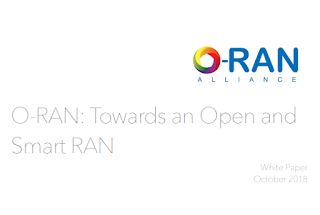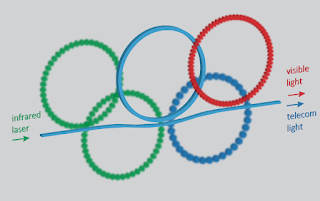Inphi has begun sampling its COLORZ II 400ZR QSFP-DD pluggable coherent transceiver for cloud data center interconnects (DCIs) to major cloud operators and OEMs.
Inphi cites several industry firsts for its COLORZ II 400ZR QSFP-DD:
The 400ZR standard promises to lower the cost and power consumption of metro data center interconnect (DCI) by enabling switch and router companies to offer the same density for both coherent DWDM and client optics in the same chassis. This eliminates a layer of network connectivity that was previously required and supports high capacity DWDM connectivity directly from data center switches.
Inphi said its COLORZ II represents a massive increase in switch rack capacity, while reducing the power consumption by as much as 80%. COLORZ II delivers up to 14.4T of capacity per rack unit (RU), compared to 2.4T or 3.6T per RU on competing solutions, representing a 4-6 x increase in throughput per chassis.
“Inphi continues to innovate as we provide an expanding suite of choices for cloud network operators and OEMs to gain the flexibility of high bandwidth DWDM connectivity in between data centers with the ability to rapidly scale their capacity,” said, Dr. Loi Nguyen, Sr VP, Optical Interconnect, Inphi. “By meeting the needs of cloud network companies that require extended link reaches, the 400ZR opens up new possibilities for DCIs to reduce total cost of ownership of cloud networks. As a fabless company we have proven our capability to quickly increase manufacturing and market share for our COLORZ 100G DWDM modules and are ready to meet our customers demand for COLORZ II.”
https://www.inphi.com/media-center/press-releases/inphi-sampling-new-colorz-ii-industrys-first-400zr-qsfp-dd-transceiver-for-cloud-data-center-interconnects/
Inphi cites several industry firsts for its COLORZ II 400ZR QSFP-DD:
- 400G single-chip, coherent Silicon Photonics Integrated Circuit (PIC) that includes all transmit and receive functions
- Innovative, low cost, passive alignment of fiber to the PIC that eliminates the complicated active alignment, using traditional optics
- Low power, high performance, 7nm CMOS-based coherent DSP enabling 400ZR as well as extended reach 100/200/300/400G ZR+ modes
- Integrated industry standard firmware management interface that enables full performance monitoring previously only available in DCI or transport systems directly from the optical module

The 400ZR standard promises to lower the cost and power consumption of metro data center interconnect (DCI) by enabling switch and router companies to offer the same density for both coherent DWDM and client optics in the same chassis. This eliminates a layer of network connectivity that was previously required and supports high capacity DWDM connectivity directly from data center switches.
Inphi said its COLORZ II represents a massive increase in switch rack capacity, while reducing the power consumption by as much as 80%. COLORZ II delivers up to 14.4T of capacity per rack unit (RU), compared to 2.4T or 3.6T per RU on competing solutions, representing a 4-6 x increase in throughput per chassis.
“Inphi continues to innovate as we provide an expanding suite of choices for cloud network operators and OEMs to gain the flexibility of high bandwidth DWDM connectivity in between data centers with the ability to rapidly scale their capacity,” said, Dr. Loi Nguyen, Sr VP, Optical Interconnect, Inphi. “By meeting the needs of cloud network companies that require extended link reaches, the 400ZR opens up new possibilities for DCIs to reduce total cost of ownership of cloud networks. As a fabless company we have proven our capability to quickly increase manufacturing and market share for our COLORZ 100G DWDM modules and are ready to meet our customers demand for COLORZ II.”
https://www.inphi.com/media-center/press-releases/inphi-sampling-new-colorz-ii-industrys-first-400zr-qsfp-dd-transceiver-for-cloud-data-center-interconnects/




















